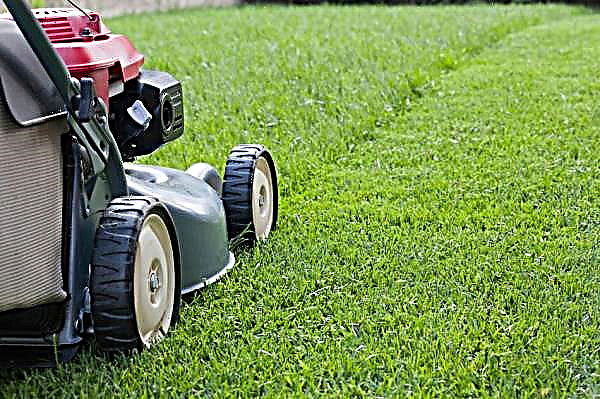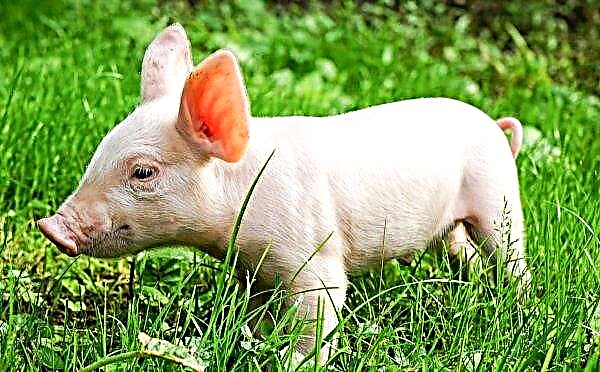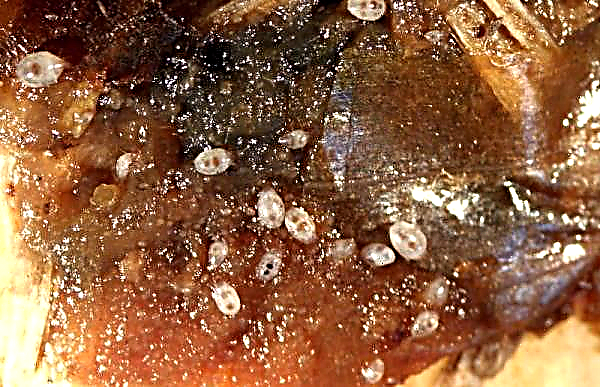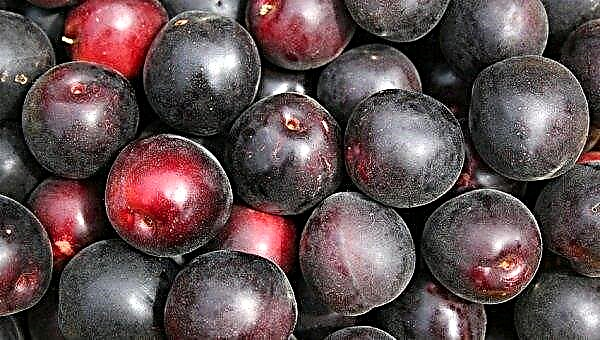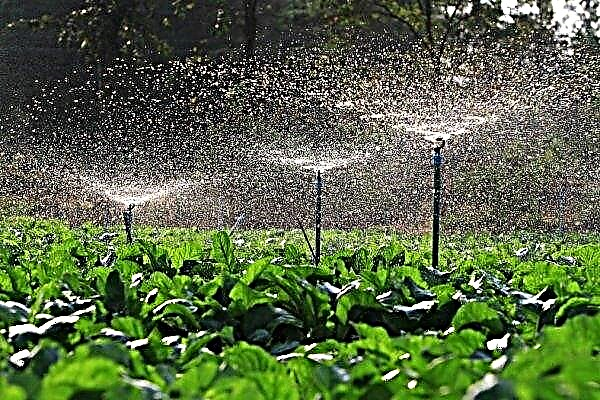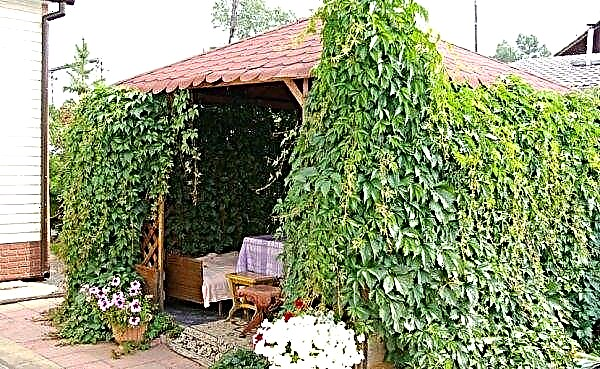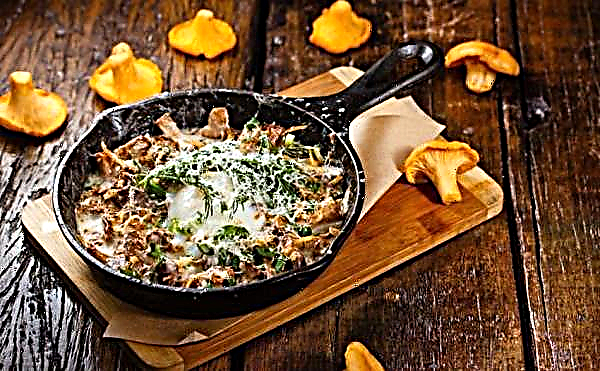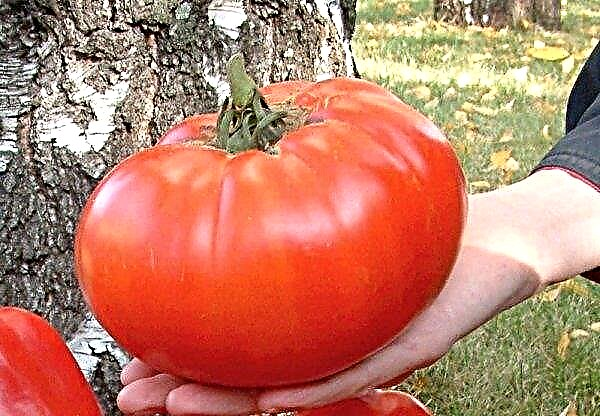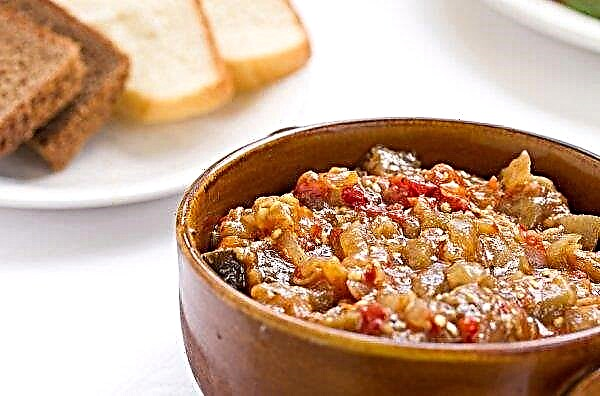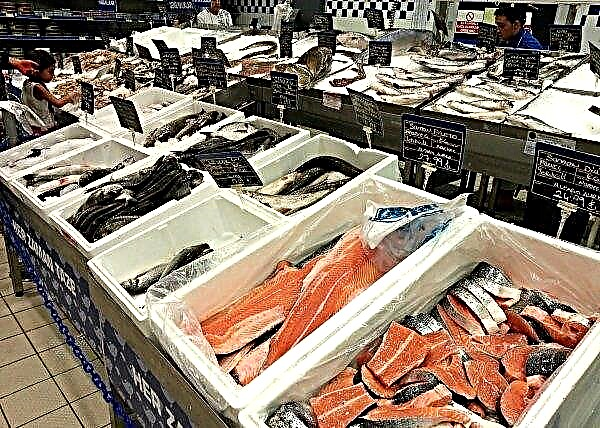Onions Jusai, better known among gardeners as allspice onions or Chinese garlic, fell into the beds of domestic vegetable growers from eastern countries and became an excellent alternative to traditional cirrus. The plant is highly regarded for its excellent taste, pleasant aroma and unpretentiousness in growing. What are the features of the described culture and what is the agricultural technique of its cultivation - further in the article.
Description and characteristics of the variety
Jusai onion (mountain garlic, allspice or branched onion) is a perennial herbaceous crop with a pleasant, spicy aroma. Externally, the plant resembles a young garlic. It has long, up to half a meter, bright green leaves, the surface of which is covered with a light waxy coating. The green onion feather is a thin, rather long, flat structure. The bulb is narrow, with a diameter of about 1.5 cm, false. During flowering, small, purple-colored flowers are formed on the culture, collected in ball-inflorescences.
Important! They are not advised to cut leaves in the first year of growth, the plant needs to gain strength and strengthen well.
The flowers have a pleasant, delicate, spicy aroma, thanks to which the onion is called fragrant. For food, parts of the plant that are above the ground — leaves and arrows with peduncles — are used. They are characterized by garlic taste, but not bitter, but pleasantly spicy. The onion does not have a pronounced taste, therefore, most often, due to the large number of useful substances in the composition, it is used to prepare medicinal tinctures and ointments. The first assembly of lush leaves is carried out in the second year after sowing seeds. The ripening of the culture begins in late July - early August, when the growth of new leaves stops and lodging of the old begins. Feathers 20-30 cm long are cut. The final cut of onion leaves is carried out two months before the expected frosts. For two cuts from 1 square. m beds can get about 4 kg of greenery.
The first assembly of lush leaves is carried out in the second year after sowing seeds. The ripening of the culture begins in late July - early August, when the growth of new leaves stops and lodging of the old begins. Feathers 20-30 cm long are cut. The final cut of onion leaves is carried out two months before the expected frosts. For two cuts from 1 square. m beds can get about 4 kg of greenery.
- Onion Jusai has several key benefits:
- unpretentiousness in leaving and undemanding to the soil;
- excellent taste of leaves;
- versatility in the use of onions. It is successfully used in cooking, folk healing, cosmetology;
- quick ripening;
- low susceptibility to ailments and parasites.
Growing conditions
Onion Jusai is absolutely unpretentious to the growing conditions and is able to perfectly develop on any soil. The only experienced gardeners do not recommend growing the plant in the area where potatoes or cabbage used to grow. The best predecessors for it are legumes or gourds.
Did you know? Scientists have proved that the aroma of onions, its taste and even the tears produced by cutting a vegetable can reduce the risk of cancer cells in the human body by several times.
The same applies to the level of humidity - onions can perfectly develop in natural conditions. But the place for him is advised to choose a fairly bright, sunny, protected from drafts and cold winds, which can adversely affect the development of the vegetable. The plant tolerates low temperatures well and even with minor frosts can quickly recover.
Growing from seeds for seedlings at home
When growing onions, Jusai practices several effective methods: seedlings and division of rhizomes. The seedless method of cultivating a vegetable is practically not used, because it gives a weak germination.
Seed preparation
Before sowing seed material for seedlings, it should be carefully prepared.
For this:
- the seeds are soaked for 8 hours in water at a temperature of about + 40 ° C, while monitoring the maintenance of high temperature indicators;
- soaked seeds are sent for another two days to ordinary water.

What is the best way to grow
For growing seedlings, you can use any container: wooden or plastic boxes, individual pots or special cassettes. When sowing seeds in boxes it is allowed to thicken the planting, but after seedlings form 2-3 full leaves, they must be thinned out.
Seed planting process
The process of sowing seed material for seedlings is quite traditional and boils down to the following steps:
- A container for sowing seeds is covered with a layer of soil mixture, which is prepared from equal parts of garden soil, peat and river sand. The earth must be decontaminated by the most accessible method: it is spilled with a weak solution of potassium permanganate or heated in an oven at a temperature of + 180 ° C for half an hour.
- Furrows are made in the soil, into which seeds are planted with an interval of about 3 cm from each other.
- The seed material is covered with soil, the surface is moistened with water by means of a spray.
- The containers with crops are covered with plastic wrap and placed in a well-lit, cool place.
Important! You should not water the seedlings too often, as abundant moisture will contribute to the growth of green mass, not the bulb.
The process of growing seedlings generally takes about two months. During this time, before the emergence of seedlings, the container with seeds must be periodically ventilated, the soil moistened. The scheme of planting seeds for seedlings.
The scheme of planting seeds for seedlings.
Transplanting seedlings into the ground
After 3-4 seedlings are formed on seedlings, it can be transplanted into open soil. As a rule, such events are carried out in March-April, when the air warms up to + 2 ° C. The culture is characterized by excellent winter hardiness and is able to tolerate low temperatures well, up to -10 ° C.
When planting seedlings in open soil, it is recommended to adhere to such rules:
- the onion site is carefully dug up;
- make furrows, moisten the soil profusely;
- seedlings are deepened into the ground with an interval of 20 cm, the earth is not rammed. In this case, the interval between the furrows should be at least 30 cm;
- after planting seedlings, the bed is again well moistened.

Growing onions from a bush in the open ground
You can also grow Jusai onions in the garden using the method of dividing the bush. For cultivation, choose developed, strong and healthy bulbs.
Site selection and soil preparation
Planting onions by dividing the rhizome is recommended in the spring or autumn. To do this, dig an onion bush at least 3 years old and divide it into parts so that each receives several well-developed and strong bulbs.
For landing, you should choose a spacious, well-lit place with nutritious and loose soil. The plant is unpretentious to the composition of the soil, so it can perfectly take root not only on black soil, but also on loamy and loamy soils.
The process of planting onions in the ground
The technology for planting onions is quite simple:
- 5–8 cm deep furrows are made in the ground;
- the soil is abundantly moistened and bulbs are planted, maintaining a distance between each of about 30 cm;
- the soil around the planting material is well squeezed with hands, not tamped;
- planting abundantly moisten with cold, well-maintained water.
 The scheme of planting onions in the ground.
The scheme of planting onions in the ground.Plant care
Caring for the described type of onion is not difficult, however, for its successful development, you should adhere to a few simple rules for watering and feeding.
Watering
Ensuring competent and timely hydration is one of the important points when caring for a vegetable. Despite the fact that he does not have special requirements for irrigation, in the second year of growth he needs to organize abundant hydration at least 10 times per season, using about 30-50 l of settled water for ambient water at one time.
In the first year, crops should be watered every seven days, focusing on the condition of the soil. At the same time, one should not zealous with irrigation measures, because in this case it is better to undersaturated a plant than to overfill.
Soil cultivation and weeding
The presence of a large number of weeds in the garden leads to the full development of onions. Parasitic plants take away nutrients and moisture from the vegetable, which negatively affects the growth of the root system and green mass. In this regard, experienced vegetable growers are advised to regularly weed weeds once a week. It is very important to carry out a similar procedure until the moment when the weeds enter the flowering phase.
In parallel with weeding, it is recommended that the soil be loosened, which allows:
- enrich the earth with oxygen and nutrients;
- optimize air exchange processes;
- to activate the enhanced growth and development of the root processes of the culture.

Feeding
Effective top dressing of Jusai onion allows you to improve its functioning, enhance growth, activate metabolic processes and ultimately get higher yields. The first portion of fertilizer must be applied in spring, immediately after the formation of the first sprouts. During this period, as a rule, urea is used, which is scattered throughout the bed, and Epina Extra solution, which is used to sprout seedlings.
Two weeks after the first feeding, you need to conduct a second treatment of the culture, using the drug "Ferovit", which helps to activate the process of photosynthesis and increase green mass. It is very important to feed the plant after a complete harvest.
The introduction of a mixture of potassium chloride, ammonium nitrate and superphosphate will strengthen the immune system of onions and prepare it for the upcoming wintering. For another and next years, it is recommended to use a solution of chicken droppings diluted with water in a ratio of 1:12 to feed the culture in spring.
Plant pests and diseases
The onion described has good immunity and, subject to the basic rules of agricultural technology, is rarely affected by any ailments.
In rare cases, the plant may become a victim:
One of the most dangerous ailments that can infect fragrant garlic is powdery mildew. Favorable conditions for the development of the disease are considered increased humidity and heavy rainfall. You can recognize the disease by the characteristic pale green spots that form on the leaves.
In order to grow a healthy culture, to prevent the appearance of pests and the development of ailments, a number of preventive measures should be taken:
- use only high-quality, healthy planting material;
- strictly monitor the balance of moisture in the soil, avoid excessive watering;
- comply with crop rotation rules;
- before sowing the seed material to conduct its heat treatment;
- in the presence of the first signs of powdery mildew, spray the plant with Profit Gold;
- from pests to treat the culture with insecticides.
Did you know? The leaves of onion Jusai in their composition contain a reduced amount of fiber, which is why they do not coarse, they always remain tender, soft and juicy. To use the greens throughout the winter, experts advise it to freeze in a freezer.
Harvesting and storage
The active period of development of onions of the Jusai variety is 5–10 years, while experienced vegetable growers do not recommend growing the plant on the same bed for longer than 5 years. The first harvest of green mass can be carried out in the second year of the growing season of the crop, while making several calls per season. For application, only leaves are cut that have reached a length of 20-30 cm. Usually, the first cutting measures are carried out in the second half of July, the latter in the second half of August, approximately two months before the expected cold weather. After the final cut, it is not recommended to disturb the onion bushes, because they need to gain strength for the upcoming wintering. Cut onion tops are able to maintain their taste and useful qualities for 10-12 days, provided that they are stored in the refrigerator. After 5 years of cultivation of fragrant garlic, in the fall, when the time for the relocation of the uterine material approaches, the culture must be removed together with the bulb.
After the final cut, it is not recommended to disturb the onion bushes, because they need to gain strength for the upcoming wintering. Cut onion tops are able to maintain their taste and useful qualities for 10-12 days, provided that they are stored in the refrigerator. After 5 years of cultivation of fragrant garlic, in the fall, when the time for the relocation of the uterine material approaches, the culture must be removed together with the bulb.
Important! It is impossible to cut all the leaves of the described variety onion completely “at the root”.
After this, the garden should be carefully prepared for the spring planting of other vegetable crops. Cut onion tops are allowed to be eaten, and a bulb dug with a small amount of earth should be placed in a dry, cool, well-ventilated place, with a stable temperature of 0 ... + 2 ° С. It is under these conditions that the bulb will be able to maintain its technical qualities and will be suitable for planting in the spring. Due to its rich chemical composition, onion Jusai can rightfully be called a real vitamin “bomb”. Its leaves and flower umbrellas-balls contain an increased percentage of ascorbic acid, which makes it possible to use the plant for the treatment and prevention of various diseases. Fragrant garlic is very easy to grow, not whimsical to soil and watering, it can perfectly please a plentiful harvest, even when cultivated on window sills in apartments.
Due to its rich chemical composition, onion Jusai can rightfully be called a real vitamin “bomb”. Its leaves and flower umbrellas-balls contain an increased percentage of ascorbic acid, which makes it possible to use the plant for the treatment and prevention of various diseases. Fragrant garlic is very easy to grow, not whimsical to soil and watering, it can perfectly please a plentiful harvest, even when cultivated on window sills in apartments.

